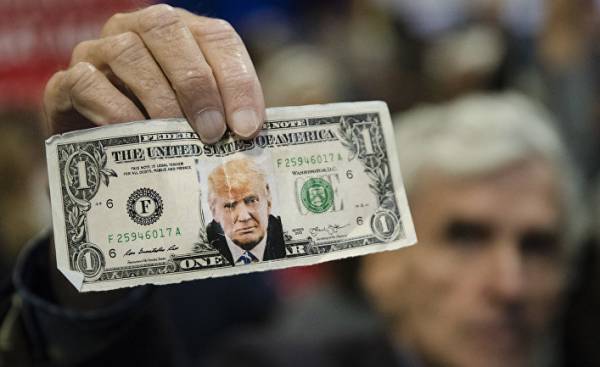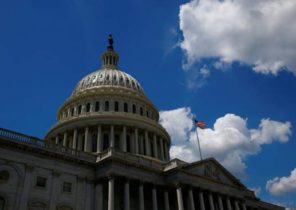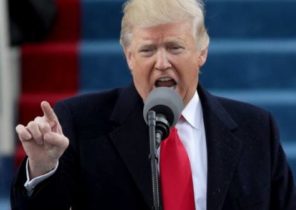
The President of the United States Donald trump is preparing to make a political mistake. The damage it will do in the first place, short-term, the countries of sub-Saharan Africa, Latin America and Asia, the economy of China and Sri Lanka (who have a large surplus in trade with the United States), as well as India and the Philippines (the major destinations for outsourcing). However, no one will suffer as much as the US itself.
The policy in question, it was a strange neo-liberal protectionism, which can be called “neoprotectionism”. On the one hand, it is an attempt to “save” jobs in the country with a staggering duties on foreign goods, command the exchange rates, limiting the inflow of foreign workers, creating obstacles to outsourcing. On the other hand, the policy of neoliberal financial deregulation. And it is not the policy which today will help the American working class.
American workers are faced with very serious problems. While the United States can now boast of a low unemployment rate (4.8 percent), for many it means only part-time employment, and the level of economic activity of the population (share of working age population that is working or looking for work) fell from 67.3 per cent in 2000 to 62.7% in January of this year. In addition, for several decades, the stagnation of real wages. Median household income today is the same as in 1998. Moreover, during the period from 1973 to 2014 the level of income of the poorest 20% of households fell slightly, while the incomes of the richest 5% of households has doubled.
One reason for these trends is the reduction in the number of jobs in the industry. The city of Greenville in South Carolina is revealing. Once he was the “textile capital of the world”. In 1990 this sector employed 48 people, and now in the city there are only 6 thousand textile workers.
But the economic causes of these trends is much more complicated. The main problem of labour resources today is only partially the openness of international trade or immigration. A more serious culprit were technological innovations, including robotics and artificial intelligence, through which productivity has risen significantly. From 1948 to 1994, employment in industry fell by 50% and productivity increased by 190%.
According to a study by University of the name of ball brothers, if from 2000 to 2010, productivity in the country remained unchanged, then the United States would require 20.9 million workers in the industry to produce all that the country has produced by the end of that decade. However, due to the productivity increases resulting from technology, in reality, the US needed just 12.1 million workers. In other words, during this period in industry was lost 42% of jobs.
Although certain forms of targeted protectionist measures are able to provide some assistance to American workers, neoprotectionism is not the right answer. And he just will not be effective — it will cause serious harm.
There is a simple fact: due to various factors, starting with safe and efficient Maritime transportation, and ending with digital technology and the Internet, global manufacturers have made available a huge mass of cheap labor. American attempts to prohibit their companies to use these resources will not change reality, they will not restrict the use of their companies in other countries. As a result, American producers will decrease the competitiveness regarding companies from Germany, France, Japan or South Korea. Meanwhile, the deregulation of the financial sector will aggravate the situation of economic inequality in the United States.
For the effective solution of the problems of American workers must first understand the essence of these problems. Every time a new technology allows companies to reduce the use of labor resources, there is a reduction of total expenses on salaries and increase profits. Meanwhile, workers need high wages. And if they don’t come from employers, then they must come from somewhere else.
It’s time to think about new forms of basic income and the distribution of profits. Finland is already conducting a similar experiment. Among the countries of the developing world India is considering such a system. This is stated in its latest annual economic report.
In addition, the tax system should become more progressive. Today it has too many loopholes for the super-rich USA. Critically important will be investment in new forms of education that will allow employees to take on more creative tasks that can’t done by robots.
Some American leftists, for example, Senator Bernie Sanders, already call for such measures. They understand that we are dealing with the conflict between labor and capital, although neoprotectionism go on about the competition between American and foreign workers. However, neoprotectionism has now been given immense power, and now they are threatening to implement its program, which will hamstring U.S. manufacturers, and ultimately will undermine America’s position in the global economy.
When in Greenville saw that the competitive advantages of its industrial sector began to disappear, the authorities could try to impose an artificial incentive to protect the companies. Instead, they have introduced incentives for the emergence of new types of businesses. Diversification has strengthened the city’s economy, despite the fact that he lost the bulk of the jobs in the textile industry.
That’s what today should think of the US government. If in the past, when low-skilled jobs in the industry first began to move to developing countries, American presidents began to preserve them to apply those neoprotectionism measures now, the us economy today could have a major, labor-intensive industrial sector. But it would be very similar to the economy of a developing country.







